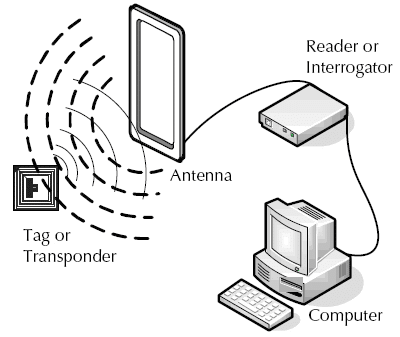Waltonchain RFID Technology Explained
Last Updated: 1st November 2018
The use of blockchain technology in the Waltonchain project is two-fold. On one hand, the Waltonchain team seeks to utilize the blockchain to bring about improvements in the supply chain management of goods. On the other hand, the team also intends to integrate blockchain with the Internet of Things (IoT) to produce a decentralized and interconnected ecosystem that the Waltonchain team refers to as the Value Internet of Things (VIoT). Underpinning the objectives laid out by Waltonchain is a piece of technology known as Radio-Frequency Identification (RFID), or Waltonchain RFID, that will enable for the realization of the Waltonchain vision.
RFID Technology
RFID is a piece of communication technology that utilizes radio waves to read and capture information that is stored on a tag attached to an object. Tags contain a microchip that stores electronic information, and these tags do not need to be within a direct line-of-sight to be tracked or read. The component of an RFID system effectively consists of two parts:
- A Tag
- A Reader
RFID tags, as well as containing stored electronic information, are also embedded with a transmitter and a receiver. A transmitter is an electronic device that produces radio waves in order to transmit data with the aid of an antenna. To send a message, a transmitter takes energy from a power source and transforms this energy into radio waves. A receiver is the exact opposite of a transmitter. Instead of sending messages, a receiver is designed, with the use of antenna, to capture radio waves that have been emitted.
In order to read the information that is stored on a tag, a two-way radio transmitter-receiver, also known as an interrogator or reader, emits a signal to the tag with the use of an antenna. The tag then responds to the signal with the information that is stored in its memory bank. The interrogator will then transmit the stored information to an RFID specific computer program.

Source: Epc-rfid.info
There are two types of RFID tags: passive and active. A passive RFID tag will use an interrogator’s radio wave in order to relay stored information back to the interrogator. Whilst an active RFID tag will use a local power source, for example an embedded battery, to power the relay of information back to the interrogator.
RFID technology can be applied to a variety of use-cases across multiple industries. For example, in the automobile industry, RFID tags are attached to automobiles during the production stage to monitor progress as it moves along the assembly construction line. Automobiles and other manufactured products containing an RFID tag can be tracked through the production process all the way to the end consumer.
Waltonchain and RFID Technology
Waltonchain seeks to incorporate RFID technology with blockchain to bring about significant structural advantages in product supply chains. There are numerous issues that can exist in a standard product supply chain, with one prominent issue being counterfeit goods. As it stands, it can often be difficult to verify the authenticity of goods as they move along their supply chain, which often results in the end consumer obtaining counterfeit products. The Waltonchain project attempts to solve this by combining RFID technology with the blockchain. With Waltonchain RFID tags, products can be tracked as they progress along their supply chain. Data related to the product is stored on the tamper-resistant Waltonchain, providing confidence that products and their accompanying data have not be altered in anyway. This then provides added transparency to the supply chain and gives manufacturers and end consumers the ability to verify the authenticity of any tagged product by referring to the Waltonchain.
Waltonchain RFID technology can also be used to achieve the Waltonchain team vision of a VIoT. Under current IoT systems, the value and information exchange carried out between IoT devices are performed under a centralized domain. However, with the Waltonchain’s team implementation, RFID tags serve as the interface for all IoT devices to create a transparent and trustless decentralized ecosystem. With RFID, the authenticity and reliability of information that is included on the chain is guaranteed. According to Waltonchain, Waltonchain RFID tags can facilitate the development of a VIoT system as:
- Each tag does not need to store node data, it is only responsible for signature verification.
- Tags automatically generate random public keys and private keys to ensure the security of IoT devices.
- Tags can reduce the amount of information that is stored on the blockchain, which can avert problems of blockchain overload due to large data amounts in the operation of the VIoT ecosystem.
- Tags can solve the problem of slow encryption and decryption in asymmetric encryption technology.
- Tags can help to achieve true decentralization of property management and asset management so as to make the data tamper-resistant.




